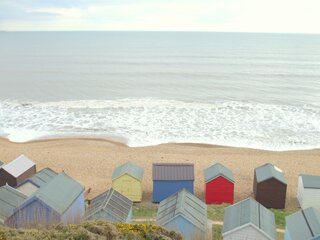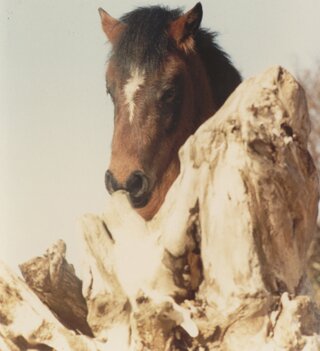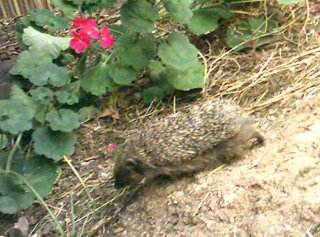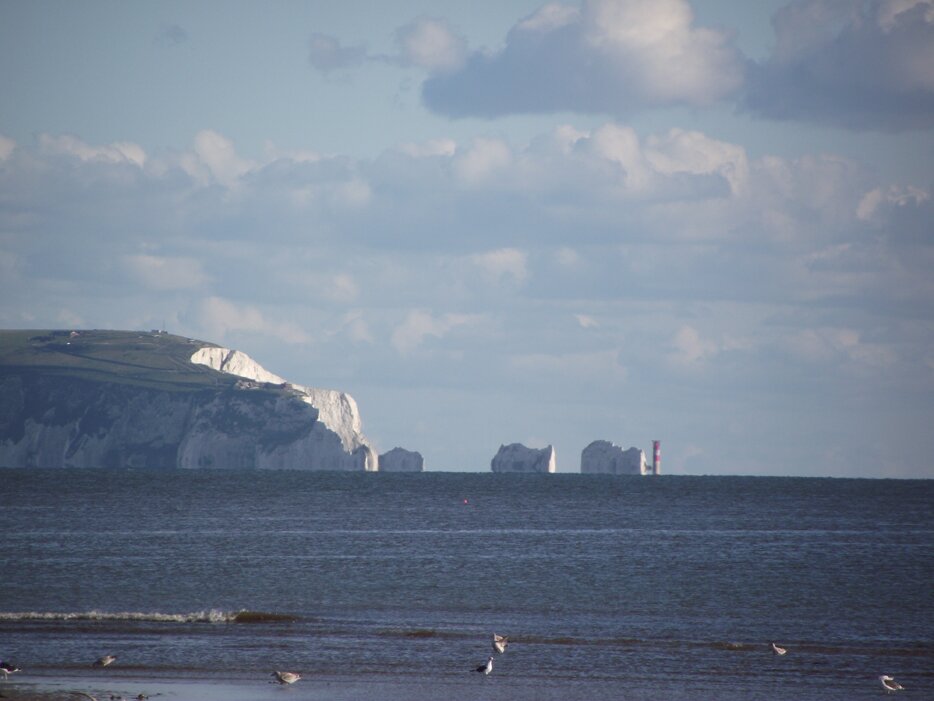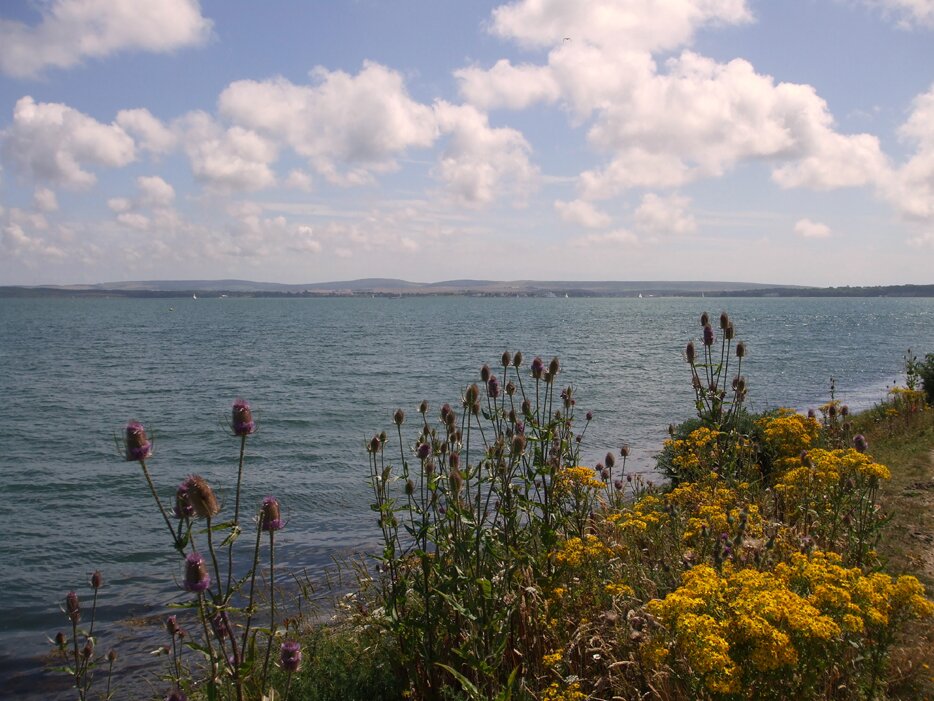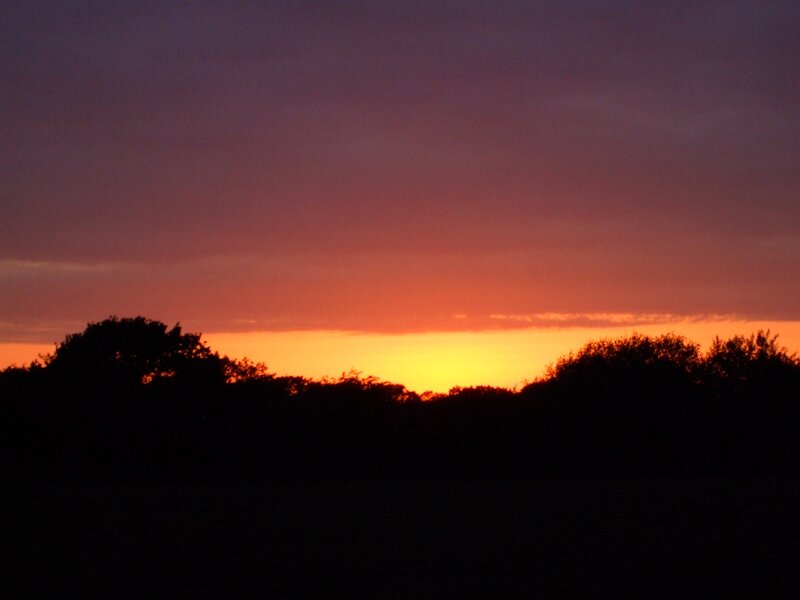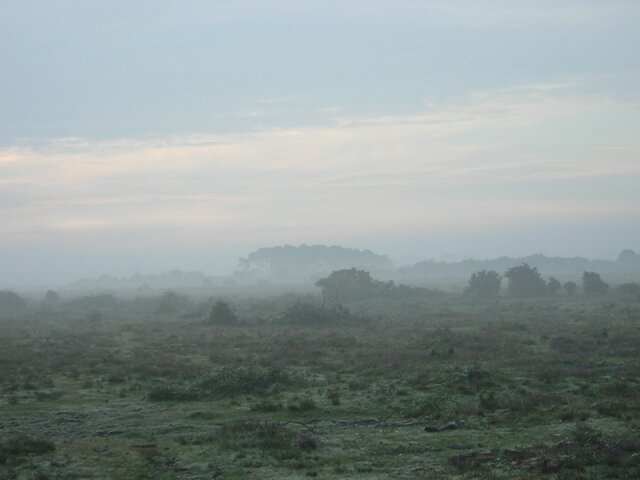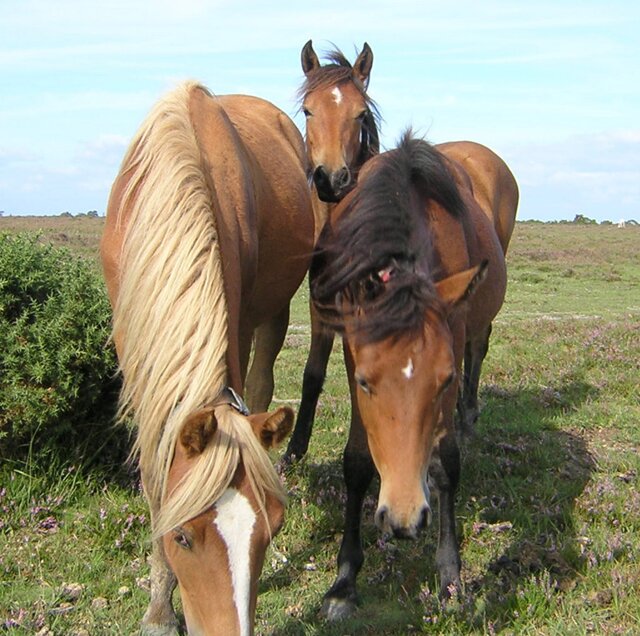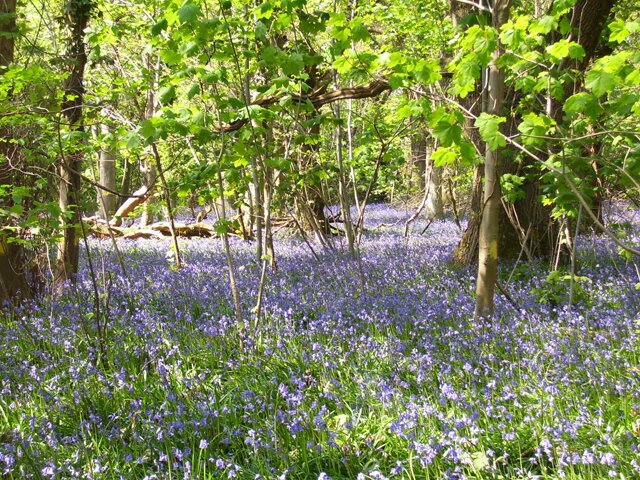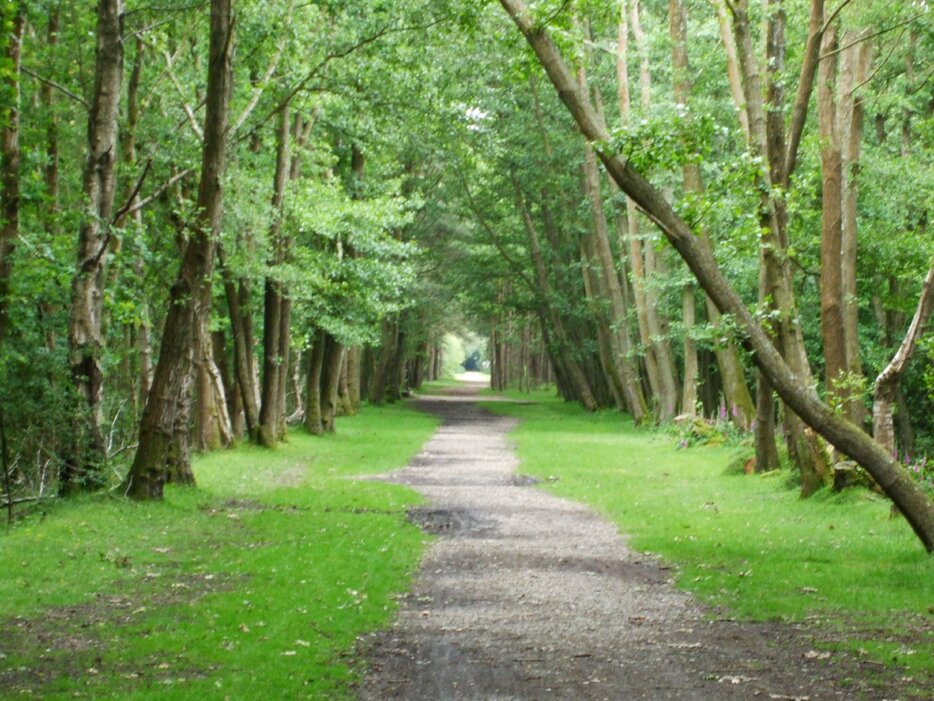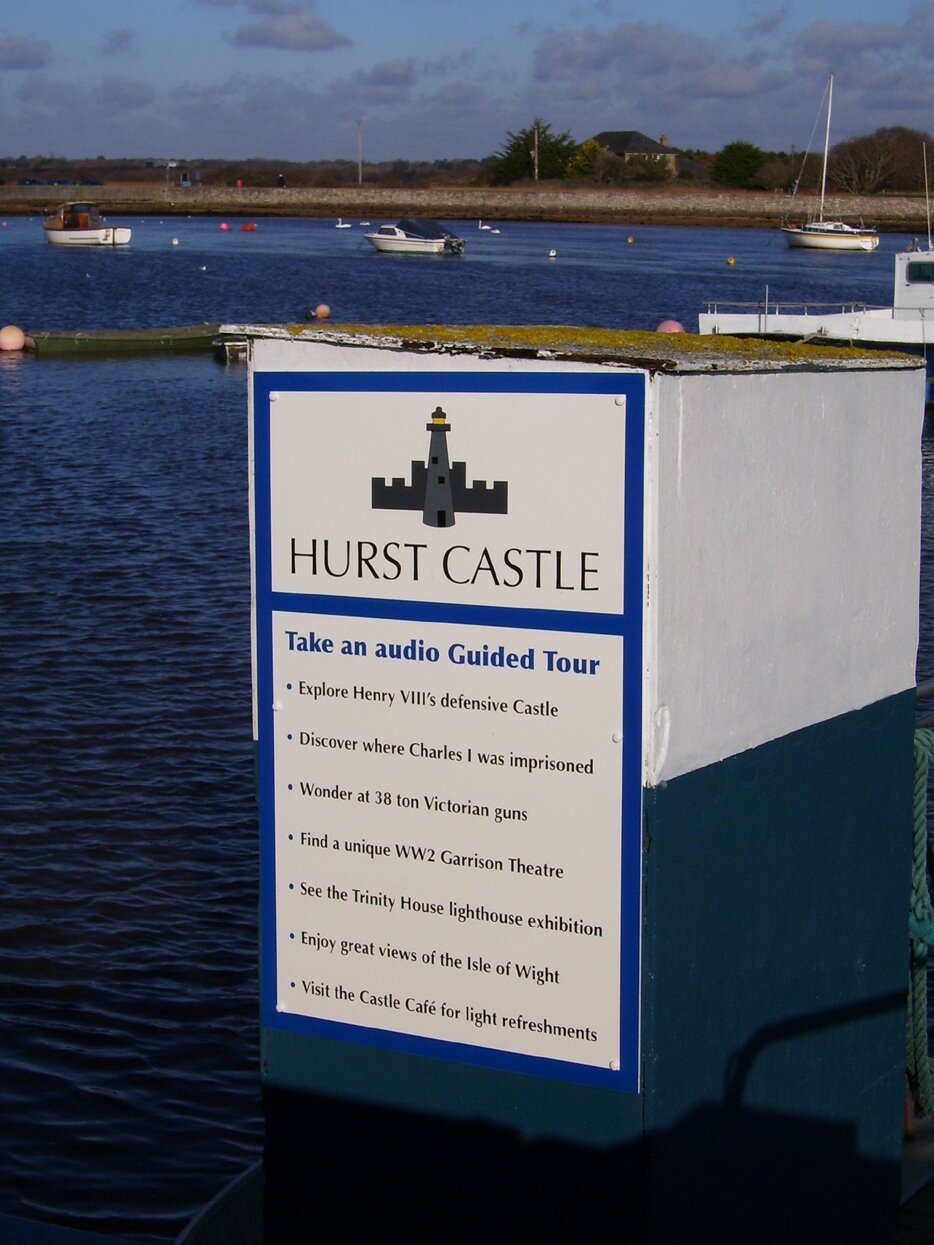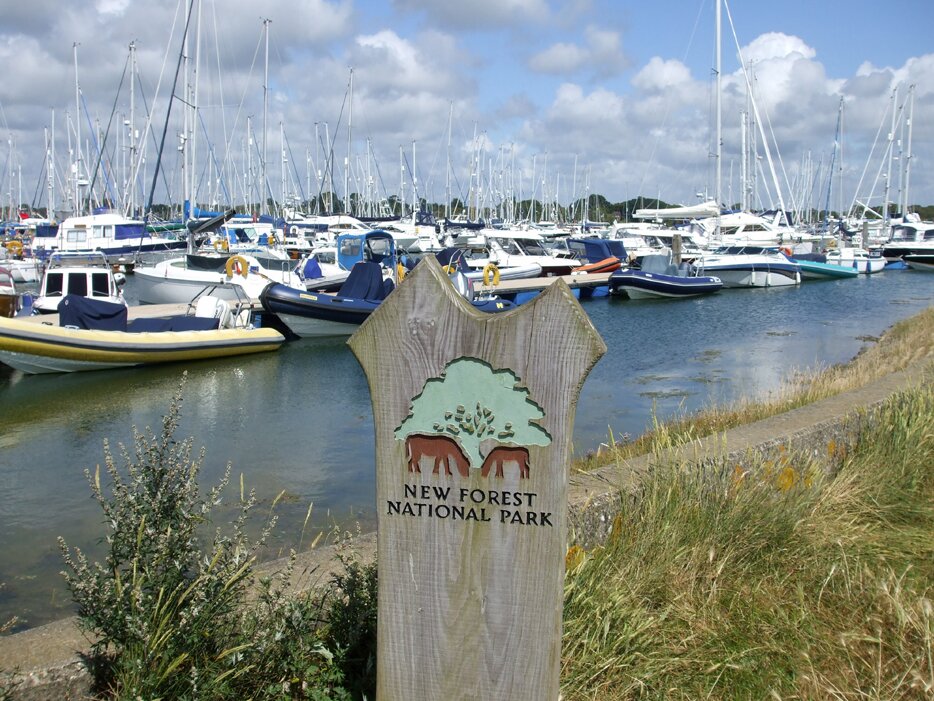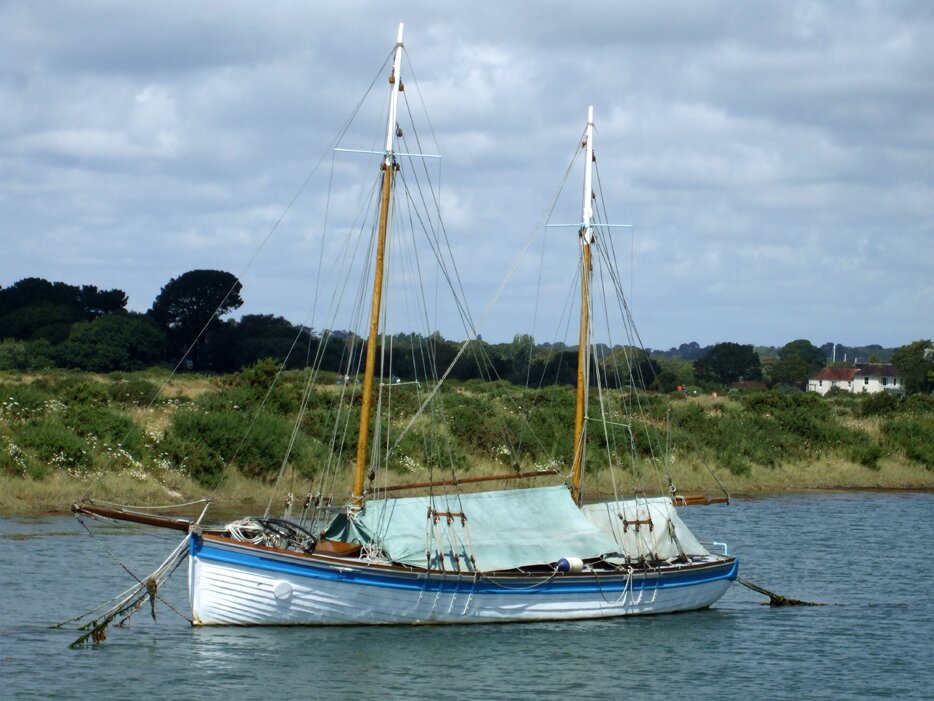History of the New Forest
The part of southern England now known as the “New Forest“, was once dense woodland part of a great Ancient Forest.
Ten thousand years ago a band of relatively resistant Chalk rock, part of the Southern England Chalk Formation ran from the Isle of Purbeck area of south Dorset to the eastern end of Isle of Wight, parallel to the South Downs. Inland behind the Chalk were less resistant sands, clays and gravels. Through these weak soils and rocks ran many rivers, from the Dorset Frome in the west and including the Stour, Beaulieu River, Test, Itchen and Hamble, which created a large estuary flowing west to east and into the English Channel at the eastern end of the present Solent. This great estuary ran through a wooded valley and is now referred to as the Solent River.
When glaciers covering the north of Britain melted at the end of the last ice age, two things happened to create the Solent. Firstly, a great amount of flood water ran into the Solent River and its tributaries, carving the estuary deeper. Secondly, post-glacial rebound after the removal of the weight of ice over Scotland caused the island of Great Britain to tilt about an east-west axis, because isostatic rebound in Scotland and Scandinavia is pulling mantle rock out from under the Netherlands and south England: this is forebulge sinking.
Over thousands of years, the land sank in the south (a process still continuing) to submerge many valleys creating today’s characteristic rias, such as Southampton Water and Poole Harbour, as well as submerging the Solent.
The estuary of the Solent River was gradually flooded, and eventually the Isle of Wight became separated from the mainland as the chalk ridge between The Needles on the island and Old Harry Rocks on the mainland was eroded. This is thought to have happened about 7,000 years ago.
People Living in the New Forest
After the last Ice Age as the Ice retreated, the New Forest Area was recolonised by people.
Bronze Age (2,500 to 800 BC)
During the Bronze Age trees were cleared by settlers, and the heathland began to form in the New Forest.
Iron Age (800 BC – 43AD)
Located at Buckland Rings is a hill fort from the Iron Age period It has been dated to around the sixth century BC. There are preserved triple banks and double ditches, however it is speculated that it started out with a single bank and ditch system. This site is the best preserved and most important in the Hampshire and Dorset basin of this type. Also at Burley situated high on Castle Hill, there is a another Iron Age Hill Fort.
Roman Empire in the New Forest (43 – 410)
At the time of Roman Invasion the people living in the New Forest were called the Belgae, they were originally from a group of tribes living in northern Gaul on the west bank of the Rhine, during the 3rd century. Between BC 57 and 52 BC Julius Caesar took over Northern Gaul and some of them moved to Southern England. They gave their name to the Roman province of Gallia Belgica, and later, to the modern country of Belgium.
43 AD
In AD 43 AD the Romans arrived at that time the New Forest was part of a much larger forest of Southern England they called the Forest of Spinaii, of which essentially all that remains today is the New Forest.
In Roman times the Solent was much shallower and the Roman soldiers could wade out to the Isle of Wight at low tide, the entire island was captured by the commander Vespasian, who later became a Roman emperor.
70 AD
At Southampton following the Roman invasion in 70 AD the fortress settlement of Clausentum was established.
In 410 AD the Roman Army left England.
Anglo Saxons arrive in Wessex
The town of Lymington began as a farm in Anglo Saxon times, and was called Limentun. The old English word Tun means a Farm or hamlet whilst Limen is believed to be a corruption of a Celtic word Lemana meaning Elm-tree, so Limentun translates to Elm Tree Farm.
King Cerdic was the first King of Anglo-Saxon Wessex from 519 to 534, cited by the Anglo-Saxon Chronicle as the founder of the kingdom of Wessex and ancestor of all its subsequent kings (House of Wessex).
The Shire of Hampshire
Hampshire was one of the first Saxon shires, recorded in 755 as Hamtunscir, but for two centuries represented the western end of Saxon England during that time Winchester became the centre of the Kingdom of Wessex.
In 842 Vikings raided Southampton.
Alfred the Great (849 – 26 October 899)
He was the famous King of Wessex from 871 to 899.
The Saxon King Alfred’s capital was Winchester, where his statue still stands. The Kingdom was under constant attack by the Vikings until King Alfred made a concerted effort and fought them off.
The Isle of Wight suffered especially from attacks by the Vikings, until Alfred the Great’s navy defeated them in 871 after they had “ravaged Devon and the Isle of Wight”.
More Viking Attacks
For several decades the Vikings stayed away but then they returned with force, attacking all around the coast.
Control of the country collapsed and the Viking King Knut assumed leadership. On his death power fell to a number of competing earls and an ineffective King Edward the Confessor.
Eventually the Anglo Saxon King Athelstan 925 to 939 who was the great grandson of Alfred the Great, became King of England.
1043 Edward ‘the Confessor’ is crowned at Winchester. He makes earls of Swein and Harold, sons of Earl Godwin of Wessex.
1045 Edward marries Edith, Godwin’s daughter.
1048 Last Viking raid on south-east England.
1051 Godwin raises a rebellion against Edward. The Godwin family is exiled.
1051/2 Duke William of Normandy is said to have visited Edward and been made his heir.
1052 Godwin and his sons sail up the Thames to London with a large fleet and force Edward to reinstate them.
1053 Godwin dies, succeeded by his son Harold.
1064 Earl Harold was in Normandy as an Ambassador from Edward or possibly as the a result of being shipwrecked joins Duke William in a campaign against Brittany. At that time it was said that he gave his support to William of Normandy, and takes an oath to assist him to become King of England.
The Creation of the New Forest (Nova Foresta)
Battle of Hastings
During the year 1066 when Edward the Confessor died Wessex was controlled by Earl Harold who claimed the throne but the Vikings attempted to regain control with an invasion in the north. While Harold was fighting them William of Normandy invaded in the south of England.
Harold’s army defeated the Vikings at the Battle of Stamford Bridge took place at the village of Stamford Bridge, East Riding of Yorkshire in England on 25 September 1066, between an English army under King Harold Godwinson and an invading Norwegian force led by King Harald Hardrada of Norway and the English king’s brother Tostig Godwinson.
After a stubborn battle Harold repelled the invaders, his victory was short-lived.
Harold’s army then rushed south to confront William of Normandy,
The Battle of Hastings which took place on 14 October 1066 was the decisive Norman victory in the Norman Conquest of England, fought between the Norman army of Duke William II of Normandy and the English army of King Harold II. The battle took place at Senlac Hill, approximately 6 miles north west of Hastings, close to the present-day town of Battle, East Sussex.
During the battle King Harold was killed.
King William I (the Conqueror)
William of Normandy (the Conqueror) was then crowned King on Christmas Day, 1066 at Westminster Abbey.
The battle of Hastings was later depicted in the famous Bayeux Tapestry, (created between 1070 and 1077).
The Bayeux Tapestry is a 0.5 by 68.38 metres (1.6 by 224.3 ft) long embroidered cloth which depicts the events leading up to the Norman conquest of England as well as the events of the invasion itself.
King William I wasted no time establishing himself. He seized control of lands and embarked on a programme of castle building. Winchester remained the royal capital and William, who was fond of hunting deer, decided to create a specific area nearby for his sport.
The New Forest
In 1079 the area of some 150 square miles was declared a royal hunting ground by King William I. Villages were depopulated and destroyed to clear the way. It is said that 36 churches were demolished during the creation of King William’s New Forest.
It was first recorded as “Nova Foresta” in the Domesday Book in 1086.
Two of William’s sons died in the Forest, Prince Richard in 1081 and King William II (William Rufus) in 1100.
William Rufus had introduced harsh penalties for breaking forest law and was very unpopular,
In King Rufus’s time the punishment for poaching or taking wood from the forest was sometimes mutilation or death.
In 1096, William’s brother Robert Curthose joined a Crusade and he needed to fund this venture, so he pledged his Duchy of Normandy to William in return for a payment of 10,000 marks a sum approximately a quarter of William’s annual revenue. William Rufus raised the money by levying a special, heavy, and much-resented tax upon the whole of England. William then ruled Normandy as regent in Robert’s absence, Robert did not return until September 1100, one month after William’s death.
On an August day in 1100, William Rufus organised a hunting trip in the New Forest, on the subsequent hunt that afternoon William Rufus was killed by an arrow whilst out hunting in the Forest, the circumstances of what happened remain unclear.
William’s body was abandoned by the nobles at the place where he fell, as the law and order of the kingdom died with the king; they then fled to their estates to secure their interests. William’s younger brother Henry, rushed to Winchester to secure the royal treasury, and then hurried to London, where he was crowned within days becoming Henry I. At this time William Rufus was taken to Winchester, and then buried at Winchester Cathedral.
The reputed spot of William Rufus’s death is marked with the Rufus Stone.
1100 Charter of Liberties
The Charter of Liberties, also called the Coronation Charter, was a written proclamation by Henry I of England, issued upon his accession to the throne in 1100. It sought to bind the King to certain laws regarding the treatment of church officials and nobles. It is considered a landmark document in English legal history and a forerunner of Magna Carta.
The document addressed abuses of power by his predecessor, his brother William Rufus, as perceived by the nobility, specifically the over-taxation of the barons, the abuse of vacant sees, and the practices of simony and pluralism.
The charter of liberties was generally forgotten until in 1213 Archbishop Langton reminded the nobles that their liberties had been guaranteed over a century prior in Henry I’s Charter of Liberties.
1215 Magna Carta
Magna Carta is an English charter, originally issued in the year 1215, and reissued later in the 13th century in modified versions that omit certain temporary provisions, including the most direct challenges to the monarch’s authority. The charter first passed into law in 1225.
The 1215 Charter required King John of England to proclaim certain liberties, and accept for example that no “freeman” could be punished except through the law of the land, a right which is still in existence today.
The charter was an important part of the extensive historical process that led to the rule of constitutional law in the English speaking world, although it was “far from unique, either in content or form”. It influenced the early settlers in New England and inspired later constitutional documents, including the United States Constitution.
1217 Charter of the Forest (Carta de Foresta)
The Charter of the Forest (Carta de Foresta) is a charter originally sealed in England by King Henry III. It was first issued in 1217 as a complementary charter to the Magna Carta from which it had evolved. It was reissued in 1225 with a number of minor changes to wording, and then was joined with Magna Carta in the Confirmation of Charters in 1297. It re-established rights of access to the forest for free men.
In building on the principles of the Magna Carta it provided some rights privileges and protections for the common man.
At this time the Royal forests were an important potential source of wood for cooking, heating and industries such as boat building and charcoal burning, this charter was almost unique in providing some economic protection for free men, who used the forest to forage for food and to graze their animals. Free men could enjoy such rights as Agistment (grazing), Estover (collecting firewood), Pannage (pasture for their pigs), or Turbary (cutting of turf for fuel).
Henry VIII (28 June 1491 – 28 January 1547)
Henry VII founded the Royal Dockyard at Portsmouth.
In the late Middle Ages, Henry VIII built an extensive set of coastal defences at each end of the Solent, part of his series of Device Forts, these included Calshot Castle (1540) and Hurst Castle (1544) to control access to east and west of the Solent.
The Mary Rose a carrack-type warship of the Tudor navy of King Henry VIII saw her last action on 19 July 1545. After serving for 33 years in several wars against France, Scotland, and Brittany and after being rebuilt in 1536, while leading the attack on the galleys of a French invasion fleet, she sank in the Solent.
The wreck of the Mary Rose was rediscovered in 1971 and recovered in 1982, the surviving section of the ship and many recovered artefacts are an amazing Tudor time capsule.
English Civil War (1642–1651)
The English Civil War (1642–1651) was a series of armed conflicts and political machinations between Parliamentarians and Royalists. The first (1642–46) and second (1648–49) civil wars pitted the supporters of King Charles I against the supporters of the Long Parliament, while the third war (1649–51) saw fighting between supporters of King Charles II and supporters of the Rump Parliament. The Civil War ended with the Parliamentary victory at the Battle of Worcester on 3 September 1651.
During the English Civil War King Charles fled to the Isle of Wight, believing he would receive sympathy from the governor, Robert Hammond. Hammond imprisoned the king and he was also held at Hurst Castle. Charles had originally intended to flee to Jersey in the Channel Islands, however he got lost in the New Forest and missed the boat.
The Civil War led to the exile of his son, Charles II, and replacement of English monarchy with first, the Commonwealth of England (1649–53), and then with a Protectorate (1653–59), under Oliver Cromwell’s personal rule.
Royal Navy Ships
Formal commons rights were confirmed by statute in 1698. The New Forest became a source of timber for ship building, with many galleons for the Royal Navy built at Bucklers Hard from New Forest timber.
Naval plantations were then created in the 18th century to supply timber for the ships of the Royal Navy.
1703 Great Storm
In the Great Storm of 1703, about four thousand oak trees were lost.
1840 The Railway arrives at the New Forest
On 11th May 1840 the Southampton terminus of the London and South Western Railway opened.
1858 Lymington Railway opens
The Lymington Railway, running between Brockenhurst and Lymington Pier was established in 1856 and opened on 12 July 1858. Three years later the company acquired a ferry to the Isle of Wight. The company was then taken over by the London and South Western Railway in 1879.
1877 Court of Verderers
In 1877 the court of Verderers was established. With ten Verderers together with six Agisters to act as a regulatory body to monitor and control activities in the forest.
1885 Sway Tower
Sway Tower is 66 metres (200 ft) tall, and is a Grade II listed building.
Built by Judge Andrew Thomas Turton Peterson on his private estate from 1879-1885, it is constructed entirely out of concrete made with Portland cement, with only the windows having iron supports. It remains the tallest non-reinforced concrete structure in the world.
On a clear day it is possible to see Sway Tower from much of the New Forest, and most of the western Solent.
1888 New Milton Railway Station
In March 1888 New Milton railway station was opened.
1897 World’s first Radio station
During the reign of Queen Victoria, in 1897, the world’s first radio station was set up by Guglielmo Marconi, at the western end of the Solent suituated at the Needles Battery which is at the western tip of the Isle of Wight.
1901 The Arrival of Electricity in Lymington
The Lymington Light and Power Co. Ltd was formed in 1898 to supply electricity to the borough of Lymington, and the supply of direct current (DC) electricity began in 1901 although it was 1931 when the mains supply changed to alternating current (AC) to improve the efficiency of the supply of electricity.
1910 Powered flight arrived in the New Forest
During the early 20th century flying arrived in the New Forest at East Boldre (old Beaulieu Airfield) in 1910, which was then was taken over by the military for flying training during the First World War.
1923 The Forestry Commission
In 1923 the Forestry Commission became responsible for the management of Crown Lands in the New Forest.
1931 Schneider Trophy
In 1931 flying over the Solent a Supermarine S.6B designed by R.J. Mitchell with the new Rolls-Royce R engine won the Schneider Trophy and also created a new world speed record, breaking the 400 mph barrier on the 29 th September at an average speed of 407.5 mph (655.8 km/h). The experience gained by Rolls-Royce and Supermarine designers gained from this was used in the subsequent development of the Rolls-Royce Merlin engine and the Spitfire.
Second World War
During the Second World War the New Forest was used by both the Royal Air Force and United States Army Air Force. As during this time there were various combat bomber and fighter airfields through out the forest,
The New Forest played a crucial part in the War effort and also the Allies build up for the D Day Invasion and the area around Lepe Country Park played a vital part in the D Day Normandy landings.
On 6 June 1944 the Lepe area was a major departure point for troops, vehicles and supplies, and was also involved in the construction of the Mulberry Harbour with parts being built in the area.
Forest Acts
After the Second World War various New Forest Acts followed in 1949, 1964 and 1970.
The New Forest became a Site of Special Scientific Interest in 1971, and was granted special status as the New Forest Heritage Area in 1985, with extra planning controls added in 1992.
In 2005 a New National Park was created.
© New Forest Handbook. All rights reserved.


